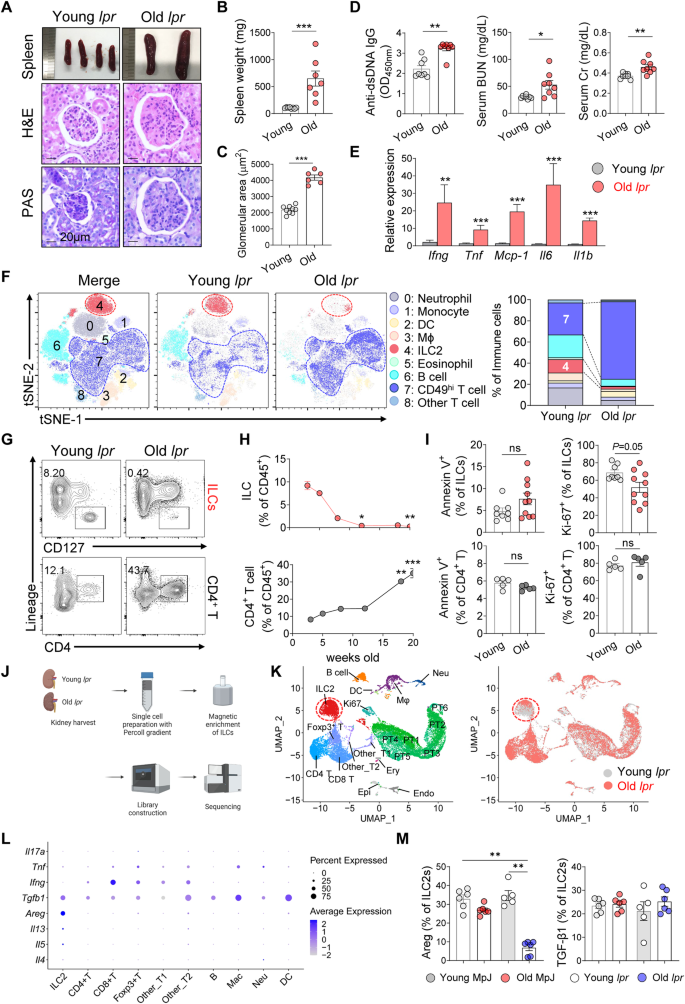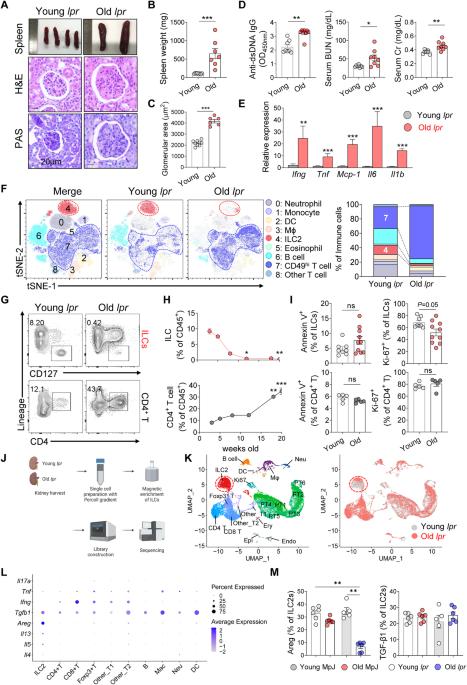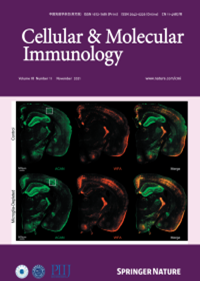狼疮肾炎中整合素α4β7和Amphiregulin表达的先天淋巴细胞的保护作用。
IF 21.8
1区 医学
Q1 IMMUNOLOGY
引用次数: 0
摘要
2型先天性淋巴细胞(ILC2)已成为狼疮肾炎等肾炎性疾病免疫反应的关键调节因子。然而,人们对 ILC2 在肾脏中的粘附和迁移机制仍然知之甚少。在这里,我们揭示了整合素α4β7在介导肾脏ILC2粘附和功能中的关键作用。我们发现整合素α4β7通过与结构细胞上的VCAM-1、E-cadherin或纤维粘连蛋白结合,使ILC2保留在肾脏中。此外,整合素α4β7的敲除减少了ILC2产生的修复细胞因子安非他酮(Areg)。在狼疮肾炎中,肾脏微环境中的TLR7/9信号下调整合素α4β7的表达,从而导致Areg产生减少,并促进ILC2的排出。值得注意的是,IL-33 治疗可上调整合素 α4β7 和 ILC2 中 Areg 的表达,从而提高狼疮肾炎患者的存活率并减轻炎症。总之,这些发现凸显了靶向ILC2粘附作为自身免疫性肾病治疗策略的潜力。本文章由计算机程序翻译,如有差异,请以英文原文为准。


The protective roles of integrin α4β7 and Amphiregulin-expressing innate lymphoid cells in lupus nephritis
Type 2 innate lymphoid cells (ILC2s) have emerged as key regulators of the immune response in renal inflammatory diseases such as lupus nephritis. However, the mechanisms underlying ILC2 adhesion and migration in the kidney remain poorly understood. Here, we revealed the critical role of integrin α4β7 in mediating renal ILC2 adhesion and function. We found that integrin α4β7 enables the retention of ILC2s in the kidney by binding to VCAM-1, E-cadherin, or fibronectin on structural cells. Moreover, integrin α4β7 knockdown reduced the production of the reparative cytokine amphiregulin (Areg) by ILC2s. In lupus nephritis, TLR7/9 signaling within the kidney microenvironment downregulates integrin α4β7 expression, leading to decreased Areg production and promoting the egress of ILC2s. Notably, IL-33 treatment upregulated integrin α4β7 and Areg expression in ILC2s, thereby enhancing survival and reducing inflammation in lupus nephritis. Together, these findings highlight the potential of targeting ILC2 adhesion as a therapeutic strategy for autoimmune kidney diseases.
求助全文
通过发布文献求助,成功后即可免费获取论文全文。
去求助
来源期刊
CiteScore
31.20
自引率
1.20%
发文量
903
审稿时长
1 months
期刊介绍:
Cellular & Molecular Immunology, a monthly journal from the Chinese Society of Immunology and the University of Science and Technology of China, serves as a comprehensive platform covering both basic immunology research and clinical applications. The journal publishes a variety of article types, including Articles, Review Articles, Mini Reviews, and Short Communications, focusing on diverse aspects of cellular and molecular immunology.

 求助内容:
求助内容: 应助结果提醒方式:
应助结果提醒方式:


